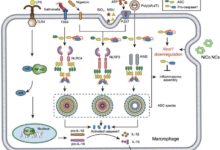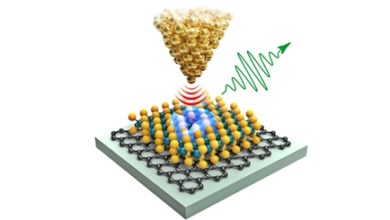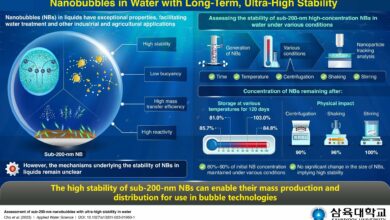
New Photocatalytic Hydrogel Nanocomposite to Carry Out Large-Scale Solar Hydrogen Production
[ad_1]
A new photocatalytic platform for mass production of hydrogen has been developed by a research group led by Professor Taeghwan Hyeon at the Center for Nanoparticle Research in Basic Science Institute (IBS) in Seoul, South Korea.

Studies carried out by the group on a photocatalytic platform resulted in the development of a floatable photocatalytic matrix. This enables an effective hydrogen evolution reaction with clear advantages over traditional hydrogen production platforms such as film or panel types.
In recent times, the importance of alternative energy has increased due to global challenges, such as climate change and environmental pollution. Among the availability of many potential alternative energy sources, hydrogen energy harvested by photocatalysis is emphasized for sustainable green energy production.
As a result, much research and development has been carried out to improve the intrinsic reaction efficiency of photocatalysts. A study carried out on the form factor of photocatalytic systems is essential for their practical application and commercialization, and remains to be actively explored.
The currently available systems have the potential to fix catalyst powders or nanoparticles onto different surfaces, such as film-type platforms, particulate sheet-type, and flat-panel types, which have been submerged underwater.
They encountered practical problems, such as poor mass transfer, catalyst leaching and back reactions. They also require additional devices to isolate and collect the hydrogen generated from the water, which adds to the complexity of the devices and increases costs.
At the Nanoparticle Research Center within IBS, the research team, led by Professor Hyeon, developed a new type of photocatalytic platform that floats on water for efficient hydrogen production.
The new platform includes a bilayer structure consisting of a lower support layer and an upper photocatalytic layer. Both layers are made of a porous structural polymer that provides a high surface tension to the platform.
The platform has been fabricated as a cryo aerogel, a gas-filled solid, featuring low density. As a result, this photocatalyst-fixed elastomer-hydrogel can float on water.
A clear benefit has been demonstrated by this platform in photocatalytic hydrogen evolution reactions: initially, light attenuation by water is avoided, leading to an effective conversion of solar energy. Second, the product, hydrogen gas, can disperse rapidly in the air, avoiding the back-oxidation reaction and saving the high reaction yield.
Third, as a result of its porosity, water can be readily supplied to the catalyst located within the elastomeric-hydrogel matrix. Finally, the catalyst has been immobilized in the matrix for long-term operation without leaching problems.
Compared with conventional submerged platforms, scientists experimentally proved the excellent hydrogen evolution performance of the afloat platforms. In addition, the scalability of the platform, which is necessary for possible industrialization, is also illustrated in natural sunlight.
It has been verified that about 80 mL of hydrogen can be generated by a floatable photocatalytic platform with the help of a titania catalyst and one atom of copper with an area of 1 m22. Even after two weeks of operating in seawater consisting of a few microorganisms and floating bodies, the evolutionary performance of the hydrogen platform was not compromised.
The proposed platform could even generate hydrogen from solutions that dissolve household waste, such as polyethylene terephthalate bottles. Consequently, the platform can be a solution for recycling waste, which contributes to an environmentally friendly society.
Jeong Hyun Kim, Center for Nanoparticle Research, Institute of Basic Sciences
In particular, this research provides a general platform for effective photocatalysis that is not only limited to hydrogen production. It is possible to replace the catalytic components for some preferred uses without changing the properties of the airgel material which floats across the platform.
This ensures the broad application of the platform for other photocatalytic reactions, such as the production of oxygen hydrogen peroxide, evolution reactions and the formation of some organic compounds.
This study makes major advances in the field of photocatalysis and demonstrates the potential for green hydrogen production in the ocean with world-class performance. Distinctive material features, high performance and wide applicability in the field of photocatalysis our platform will undoubtedly open a new chapter in alternative energy.
Taeghwan Hyeon, Professor, Center for Nanoparticle Research, Institute of Basic Sciences
Journal Reference
Lee, W.H., et al. (2023) Floatable photocatalytic hydrogel nanocomposites for large-scale solar hydrogen production. Natural Nanotechnology. doi.org/10.1038/s41565-023-01385-4.
Source: https://www.ibs.re.kr/eng.do
[ad_2]
Source link






